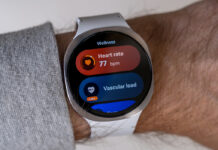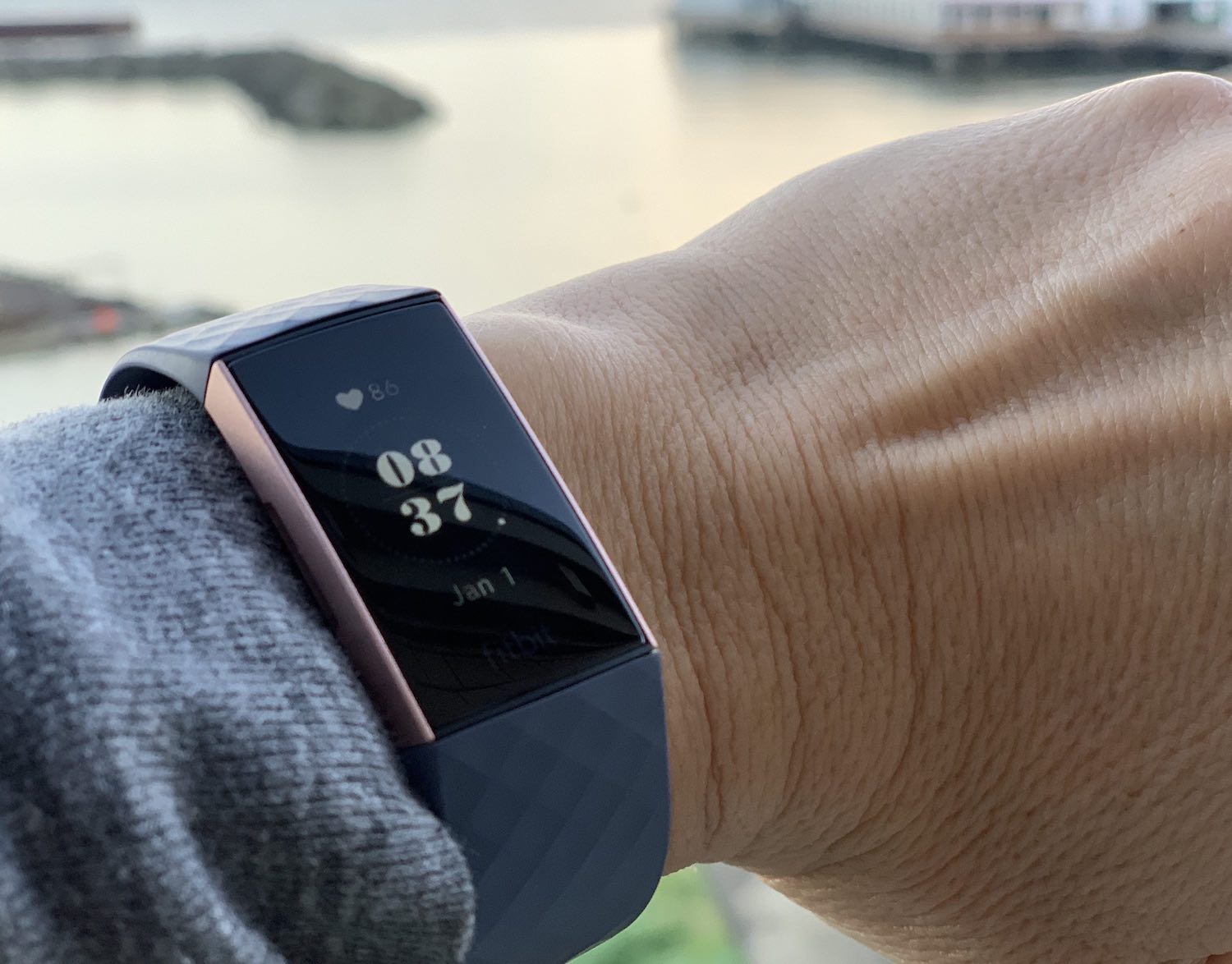
If you’ve only been using your fitness tracker to track your steps or daily runs, you might have forgotten about some of the other benefits trackers have. Take the Fitbit Charge 3 for example; I wrote a review of it a month ago, and I was really impressed how accurate the heart rate monitor was.
The Fitbit Charge 3 tracks your heart rate all day, and you can just tap your wrist or open the Fitbit app to see exactly what your heart rate is at that minute. The heart rate data is really valuable. It lets you can look back and see how your body reacts in time of exciting events or stress, and you can use that information to plan a better strategy for your own health or self care.
Tracking my New Year’s Eve heart rate
A great way to demonstrate the accuracy and helpful data you get from the heart rate monitor in the Fitbit Charge 3 is to watch your heart rate hour by hour during an exciting event. What better event could you track than New Year’s Eve and New Year’s Day?
The start of a brand new year; a blank slate where anything is possible, is exciting on its own. Even if you’re in your PJ’s on the couch, everyone’s heart rate will rise a little bit as the ball drops and the countdown starts.
To celebrate the beginning of 2019 and say goodbye to 2018, I decided to take a trip down the coast to Portland, Canon Beach, and Astoria, Oregon in the days leading up to New Year’s Eve. I planned quite a few exciting events, and my Fitbit Charge 3 tracked my heart rate during all of them.
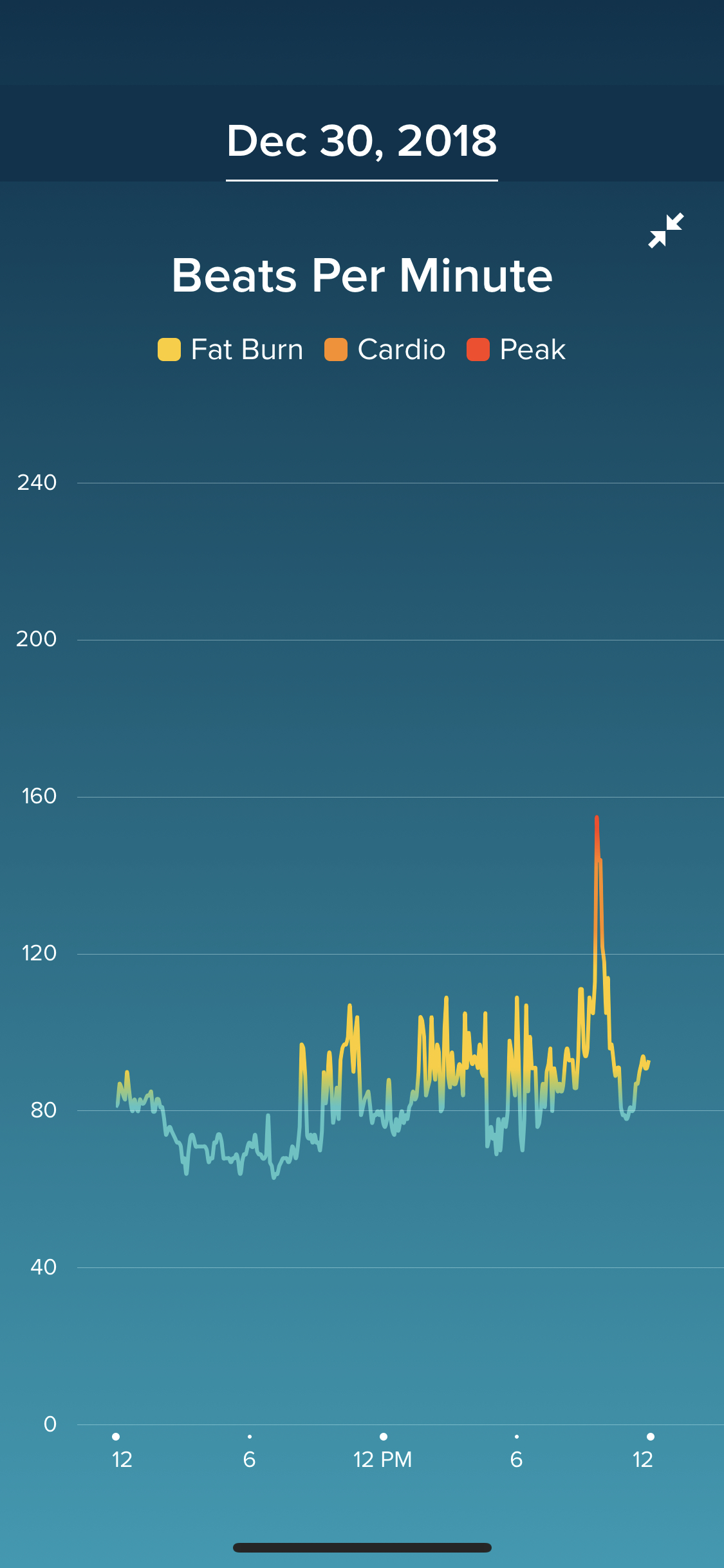 |
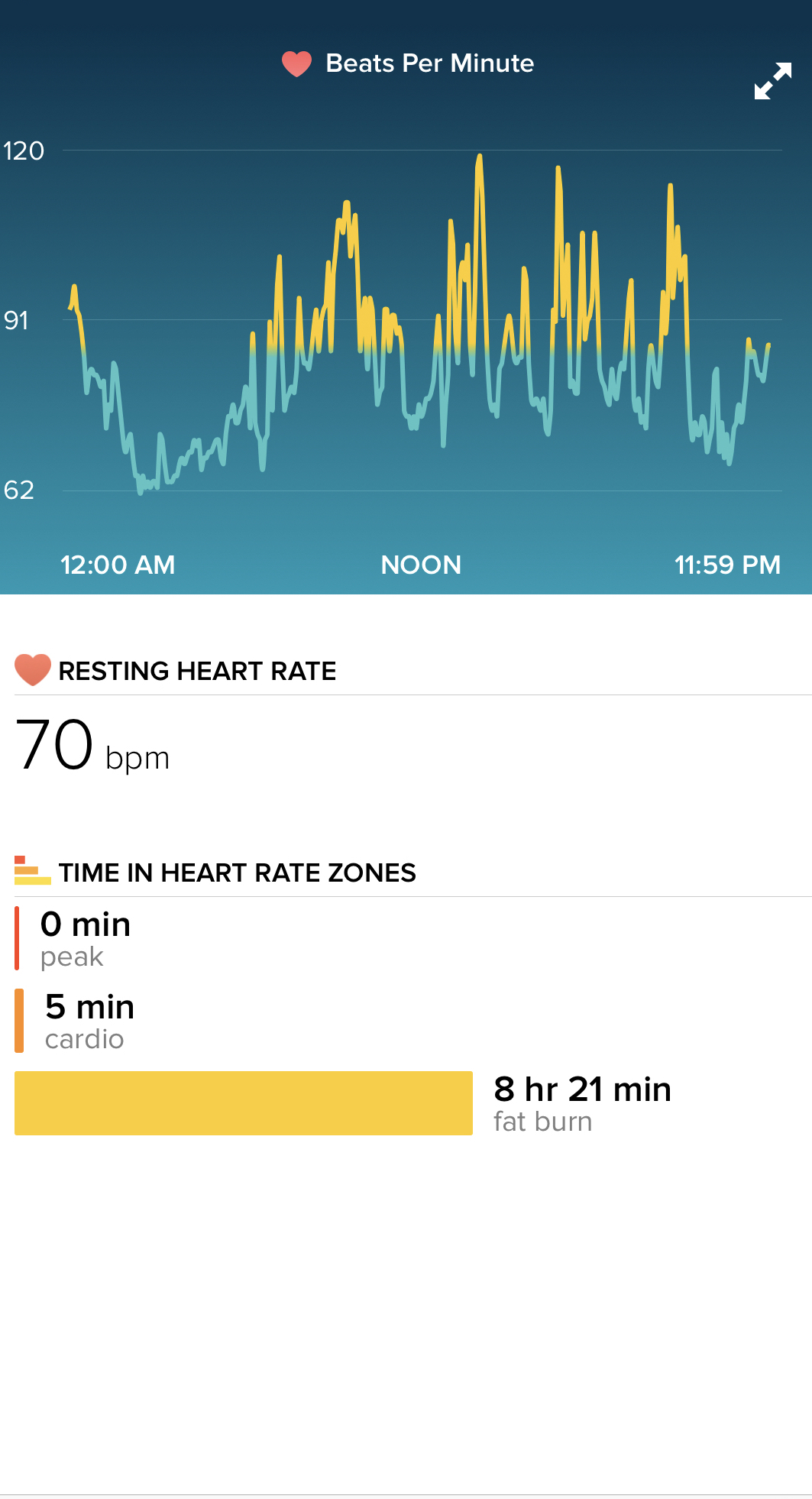 |
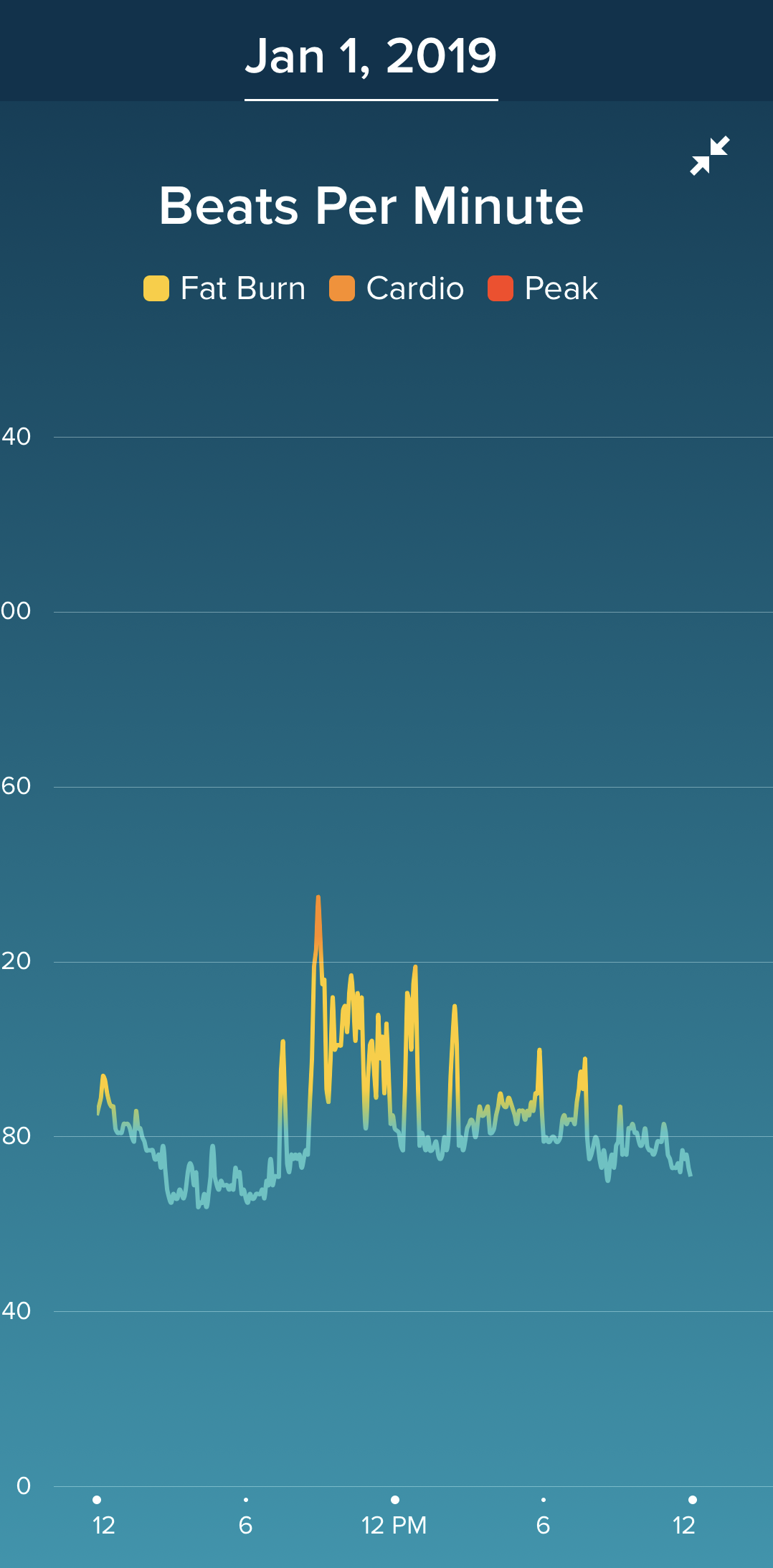 |
Our first stop was Portland on December 30th, and you can see the exact hours I was driving as opposed to chasing my kids around OMSI, the Oregon Museum of Science and Industry. There were a ton of stairs to climb and exhibit to roam around, and you can see my heart rate spiking into the fat burning zone a few times.
The next day, New Year’s Eve, we headed down the coast to Canon Beach. The Fitbit Charge 3 tracked my heart rate as I did an hour long walk/run along the ocean toward Haystack Rock. Any mother can relate to how my resting heart rate of 70 bpm spiked into the 120’s a few times as my son attempted to climb parts of Haystack Rock.
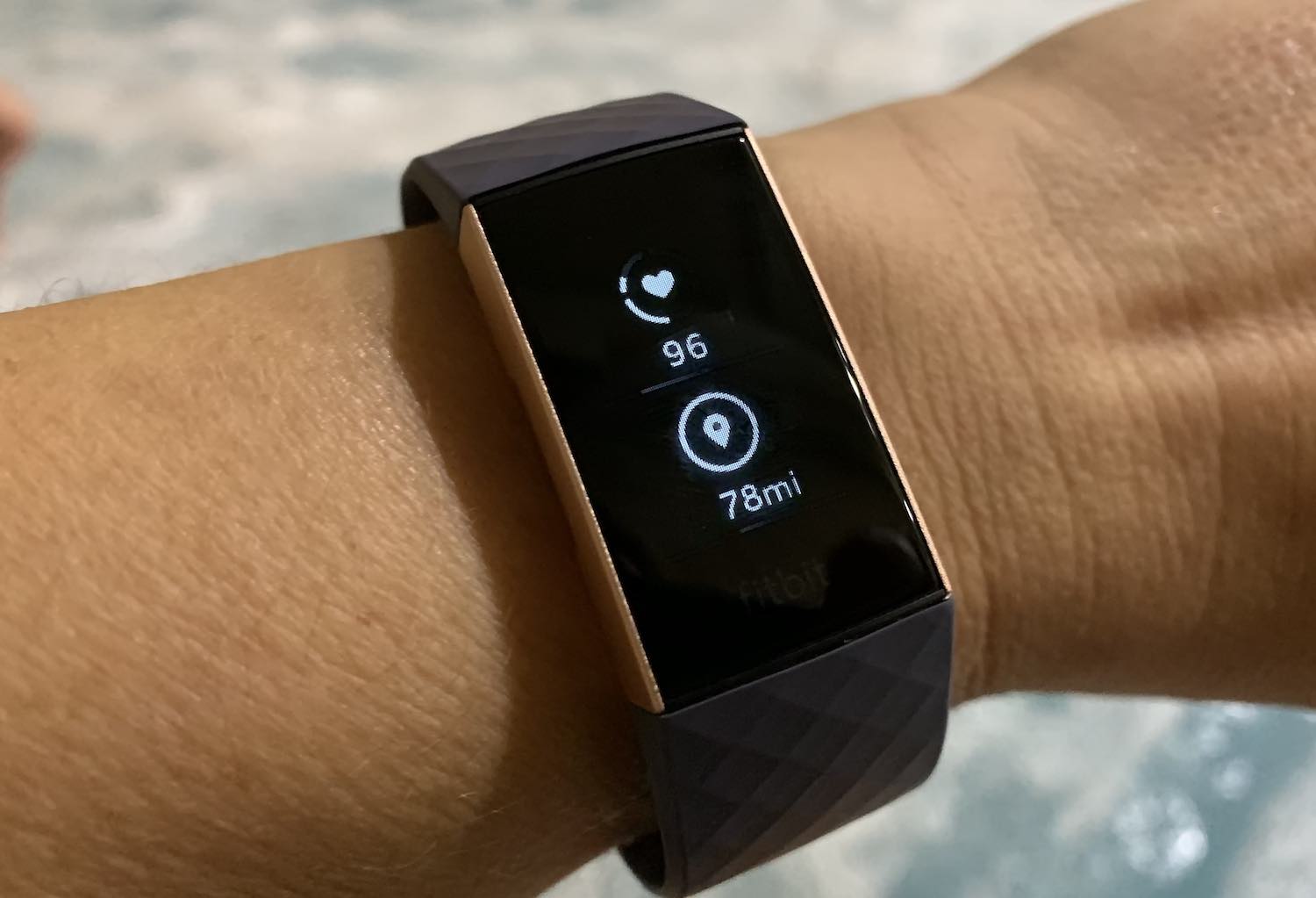
Later that evening we drove to Astoria, and that’s where we decided to spend the hours leading up to the New Year at the Rogue Public House. We were sitting in a great crowd of people, and it was really interesting to see my heart rate rise and fall as the night went on. At certain times the Fitbit tracked me peaking at 120 bpm, but all I was doing was sitting or playing darts.
Unfortunately for us, almost everything in Astoria closed at 11 pm that night, so after a quick walk past some of the historic buildings we were back at the hotel and ready for bed. You can see my heart rate slow down in the hours between 11 pm and midnight, spiking slightly when the clock struck 12:00 am. The sleep tracker feature of the Fitbit Charge 3 picked up and tracked both my sleep and resting heart rate from that point on.
Taking on the New Year with Fitbit Charge 3
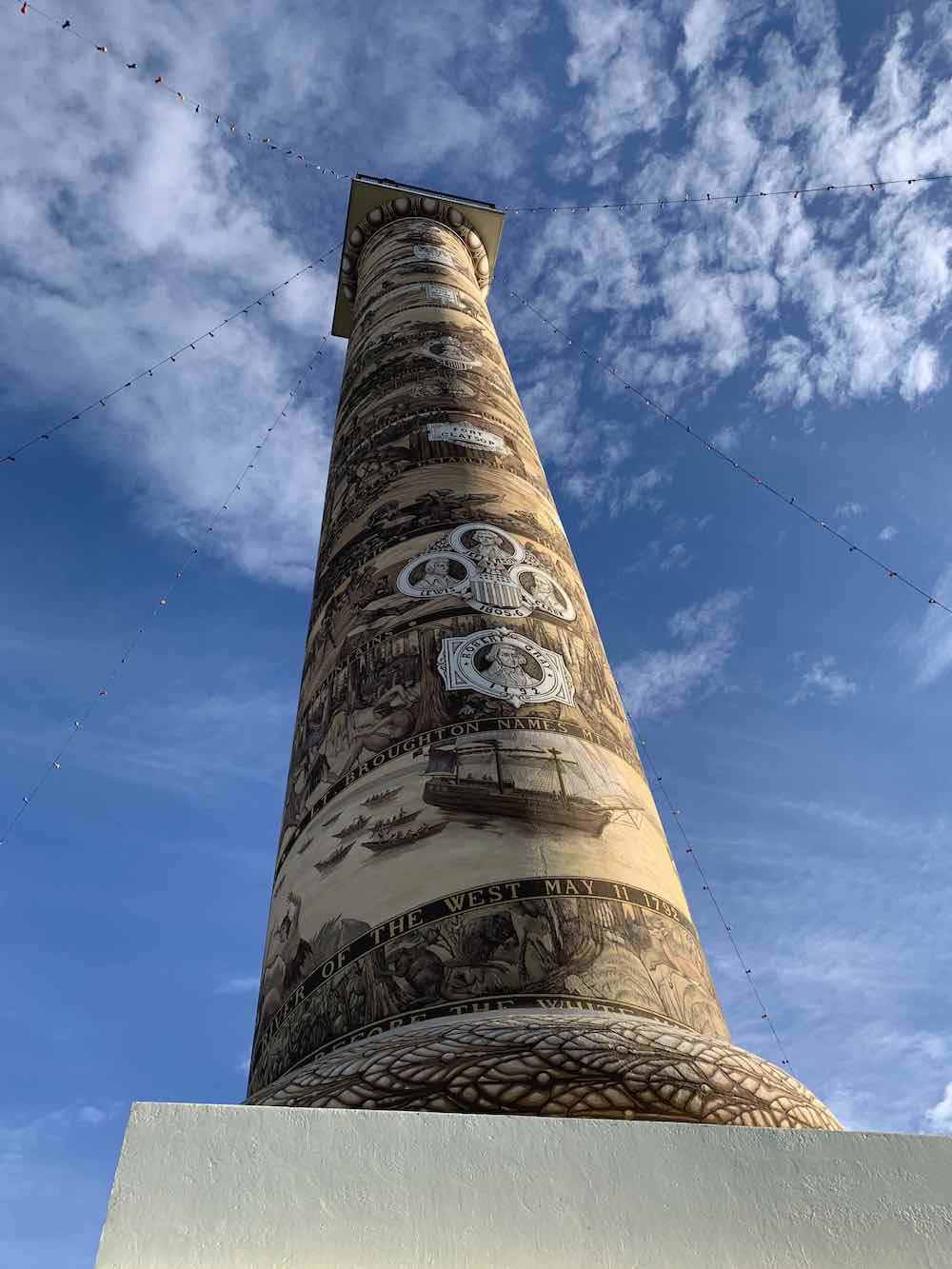 There was one last part of our trip before we headed home on New Year’s Day, and that was climbing the Astoria Column. Built in 1926, this column has a long and windy spiral staircase to take you to the top. It has 164 steps and is 125 feet high. According to my Fitbit Charge 3, I climbed 30 floors that morning, and my heart rate was at 136 bpm while climbing. It was a great, quick workout, and you can’t beat the view.
There was one last part of our trip before we headed home on New Year’s Day, and that was climbing the Astoria Column. Built in 1926, this column has a long and windy spiral staircase to take you to the top. It has 164 steps and is 125 feet high. According to my Fitbit Charge 3, I climbed 30 floors that morning, and my heart rate was at 136 bpm while climbing. It was a great, quick workout, and you can’t beat the view.
As you can see from my days of tracking, this type of heart rate data can help anyone take on a new year.
Health and fitness tracking with Fitbit
If you’ve just begun a new fitness program you’re going to be watching the scale really closely. I’ve lost 40 pounds over a year and a half by watching what I eat and exercising, but there were times the scale wasn’t budging and I had no idea if all of my effort was in vain.
![]()
You don’t always see results right away, so it’s easy to be discouraged when working out. But when you track your resting heart rate all day every day, you’re going to see data that shows you results even when your scale won’t. With time, your heart rate may not spike into the peak zone as often. Or, your Fitbit Charge 3 will track your daily workout and heart rate every day, showing you a decrease in the time it takes you to complete it or how your speed has improved.
Use your resting heart rate as your guide
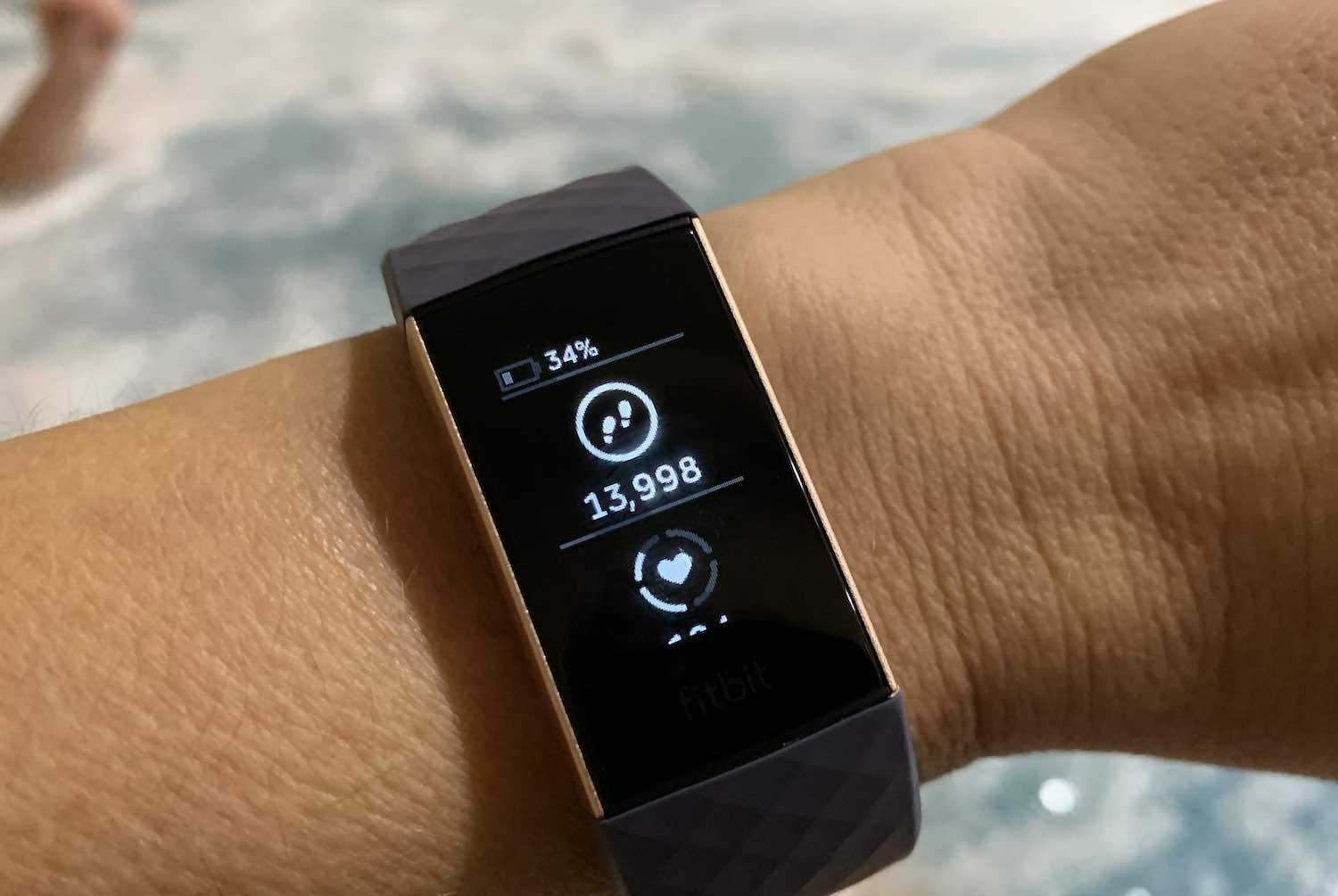
A resting heart rate is one of the key metrics you can use to show how healthy you are. A lower resting heart rate indicates efficient heart function and improved cardiovascular fitness.
When I started working out my resting heart rate was in the 90’s, and it’s dropped as low as 65 bpm while asleep. That’s a huge drop over a year, and it shows how my body has responded to my diet and workouts.
You’ll also be able to keep an accurate record of your heart rate data to show your doctor if you need to. If you see spikes or drops that look out of the ordinary to you, you’ll know whether to book an appointment for advice.
General daily planning
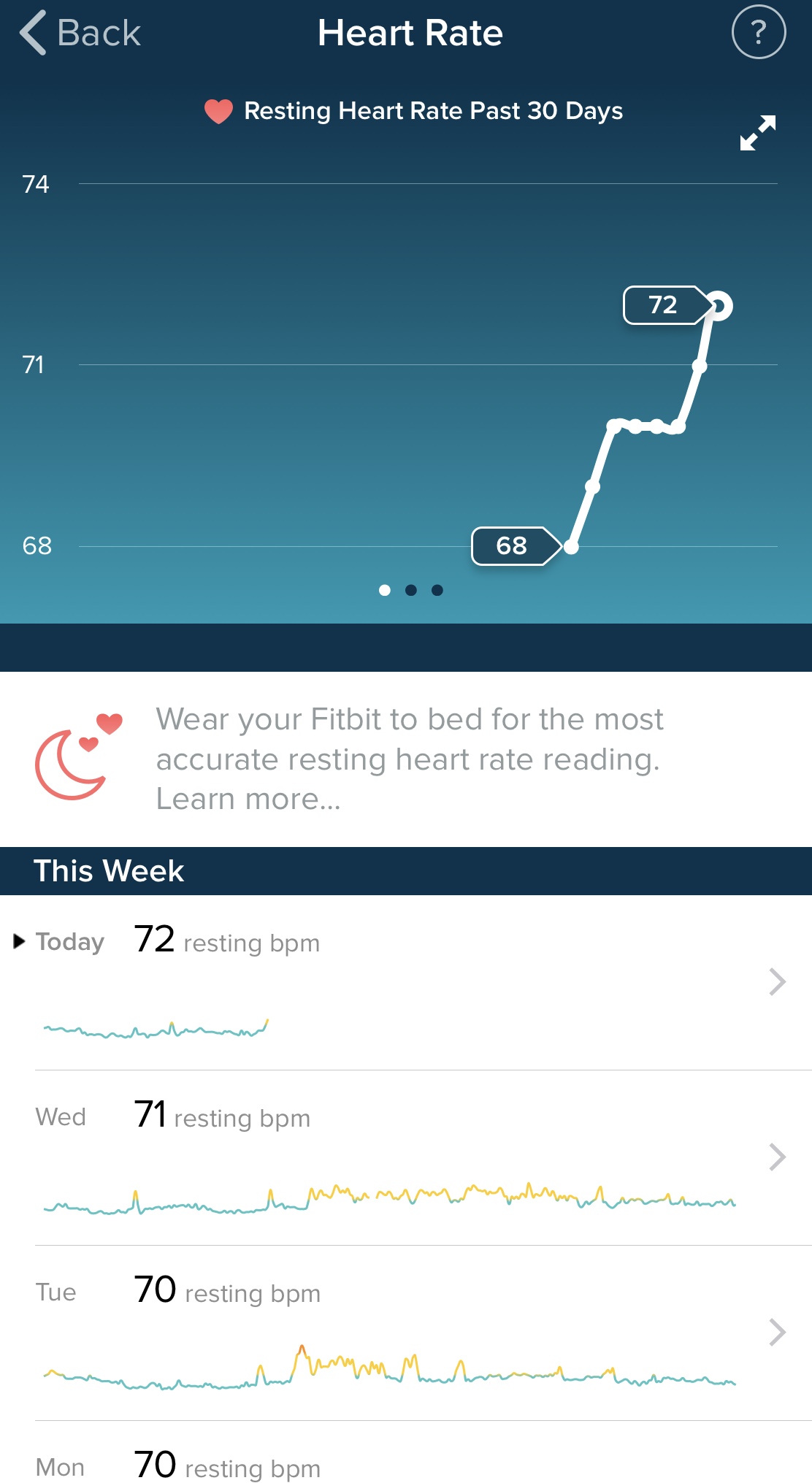
Into every life a little (or a lot) of stress might fall, and you can use your heart rate monitor to see how you’re adapting to that stress on a daily basis. Watching what type of non-exercise activities make your heart rate spike can show you where you need to make changes in your day to day life.
You can see my resting heart rate rose over the past month, but that’s understandable given how busy December can be.
With a Fitbit Charge 3 on your wrist, your heart rate data will be stored and saved in your Fitbit app. You’ll be able to look back at different life events and activities and see how your body reacted to them for days, weeks, months, and years.
Tracking your heart rate is one of the best habits you can start in the New Year. It’s offers you a deeper understanding of how your body works during exercise, daily activity, and times of stress and excitement.
For more on how the Fitbit Charge 3 monitors your heart rate, check out my review. If you’re ready to track your heart rate every day too, you can find the Fitbit Charge 3 on Best Buy right now.


